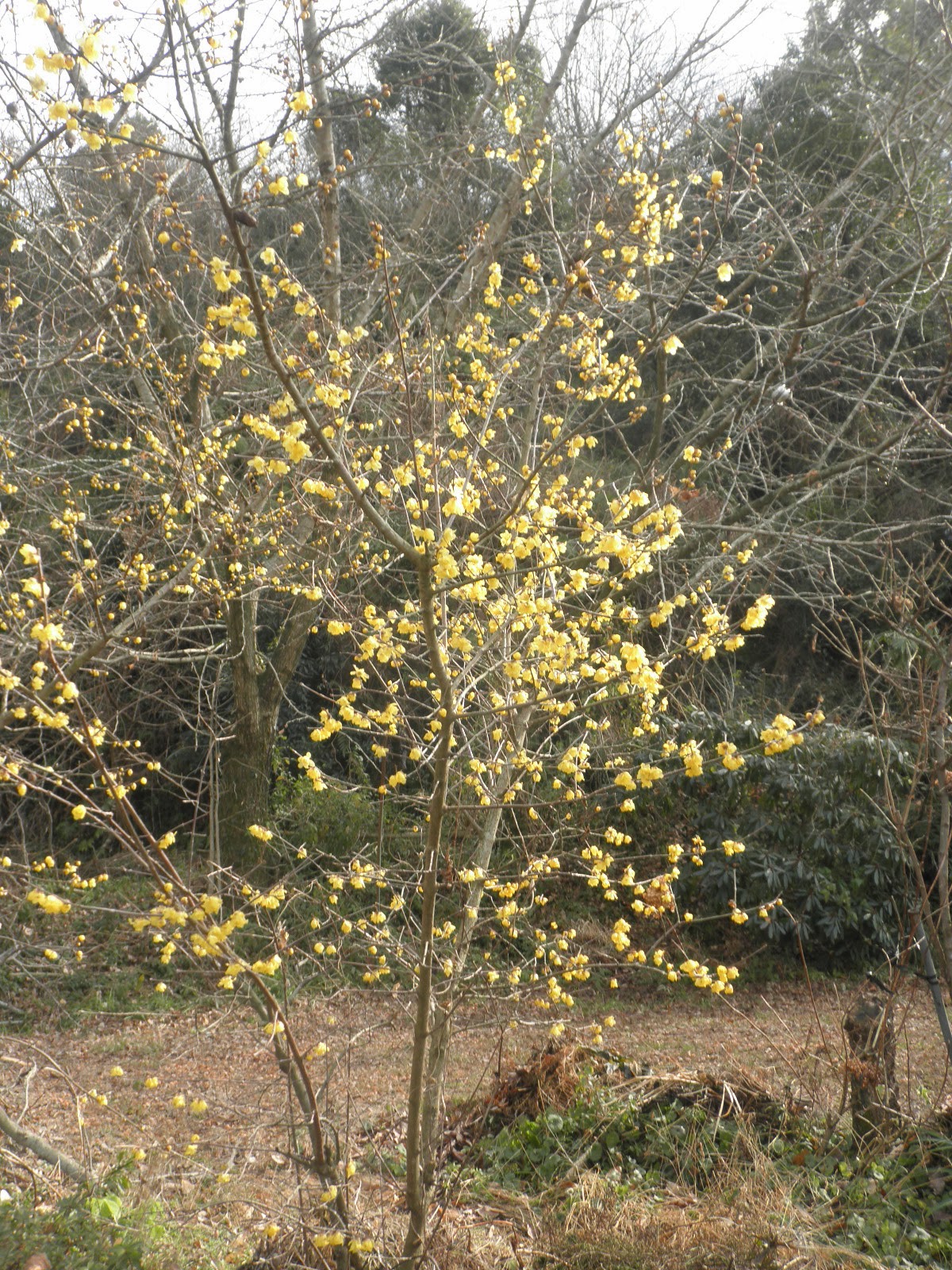Wintersweet flowers entertain Japanese longing for arrival of spring
 The happy New Year’s holidays are over, and people in many parts of Japan will have to endure cold days until the arrival of spring. “Ume” Japanese apricot trees are just beginning to put out buds, but passers-by are sometimes surprised by a fragrance given off by casually planted wintersweet trees at roadsides, corners of fields and elsewhere.
The happy New Year’s holidays are over, and people in many parts of Japan will have to endure cold days until the arrival of spring. “Ume” Japanese apricot trees are just beginning to put out buds, but passers-by are sometimes surprised by a fragrance given off by casually planted wintersweet trees at roadsides, corners of fields and elsewhere.
Rohbai consists of “roh” and “bai”; the first part means wax and the second part means “ume.” Its thin, semitransparent petals look like wax papers. Because the shape of its flowers resembles that of ume flowers, rohbai is so named, but it is actually a completely different genus.
It is said that wintersweet trees were imported into Japan in the middle of the 19th century. Robai is in bloom before leafing.
 Rohbai flowers are less impressive than ume flowers and cherry blossoms, but the tree can grow even in the shade. This may be a reason why rohbai flowers look adorable and a little encouraging to Japanese, as they try to be patient in their life for the rest of the winter. The day of "daikan," the coldest day of the year on the traditional seasonal period calendar, falls around Jan. 20, but the days are getting longer and the approach of spring is gradually felt in cold winds.
Rohbai flowers are less impressive than ume flowers and cherry blossoms, but the tree can grow even in the shade. This may be a reason why rohbai flowers look adorable and a little encouraging to Japanese, as they try to be patient in their life for the rest of the winter. The day of "daikan," the coldest day of the year on the traditional seasonal period calendar, falls around Jan. 20, but the days are getting longer and the approach of spring is gradually felt in cold winds.


Thank you! This is our second Winter in Japan. I was wondering what these were. There is one big tree by where we like to walk that is wonderful to pass by. Thank you for the info!
ReplyDelete